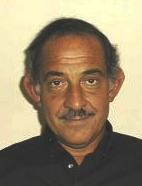
Abstract
Survivable passive optical networks are desirable for applications in environments that are vulnerable and where providing power to the network infrastructure is difficult. Some examples include: a network that has been rapidly deployed for disaster recovery, where network fibers are likely not well protected; a network deployed near an area of hostility, where the network is subject to physical attack and where delivering power to the core of the network is not possible; and a network within a military aircraft or other mobile platform where survivability is essential and where having a passive infrastructure is highly desirable to minimize power requirements. Such networks can be realized by interconnecting passive optical routing devices, e.g., arrayed waveguide grating (AWG) routers, with optical fibers to form various network topologies of desirable routing and survivability requirements. Although standard AWGs can be used to realize various useful network topologies, other more desirable networking requirements require more general routing devices. This seminar addresses the desirable architectural requirements of such passive optical networks, and, most importantly, the corresponding requirements they place on generalized passive optical routing devices.Most recently, the direct synthesis of a three-dimensional foam-like graphene structure by CVD was realized, yielding materials known as graphene foams (GFs) [9]. A GF consists of an interconnected network of graphene, which is flexible and offers fast transport channels for charge carriers, thus yielding high electrical and thermal conductivity. Even with a GF loading of as low as 0.5 wt %, GF/poly (dimethylsiloxane) (PDMS) composites exhibit a very high electrical conductivity of 10 S/cm, which is 6 orders of magnitude higher than chemically derived graphene-based materials. Using the unique network structure and outstanding electrical and mechanical properties of GFs, as an example, the great potential of GF/PDMS materials is demonstrated as flexible, foldable, and stretchable elastic conductors.
Biography
Dr. Saleh is a Researcher in the ECE Department at UCSB, since October 2011. He most recently was a Program Manager at DARPA, from 2005 to 2011, where he initiated research in various areas of optical networking. Previously, he was: a Founding Partner of Monarch Network Architects, 2003-2004; Chief Scientist and Vice President of Network Architecture of Kirana Networks, 2002-2003; Vice President and Chief Network Architect of Corvis Corporation, 1999-2002; Department Head at AT&T Bell Labs / AT&T Labs Research, Holmdel and Murray Hill, NJ, 1991-1999, conducting and leading research on optical backbone and access networks; and Member of Technical Staff at AT&T Bell Labs, Crawford Hill Lab, 1970-1991, conducting research on microwave, wireless and optical communications systems. Between 1992 and 1999, he led the AT&T effort on several cross-industry DARPA-funded consortia that pioneered the vision of all-optical networking in backbone, regional, metro and access networks.He was a Member, then Chair of the OFC Networks Subcommittee, 1995-1998; Technical Program Co-Chair, OFC 1999; General Program Co-Chair, OFC 2001; and OFC Steering Committee Member, 2001-2006. He was an Associate Editor of the IEEE J-SAC Optical Communications and Networking Series from 2002 to 2005. He has more than 100 publications and 25 patents. He holds Ph.D. and B.Sc. Degrees in Electrical Engineering from MIT, and University of Alexandria, Egypt, respectively, and he is a Fellow of the IEEE and a Fellow of the OSA.